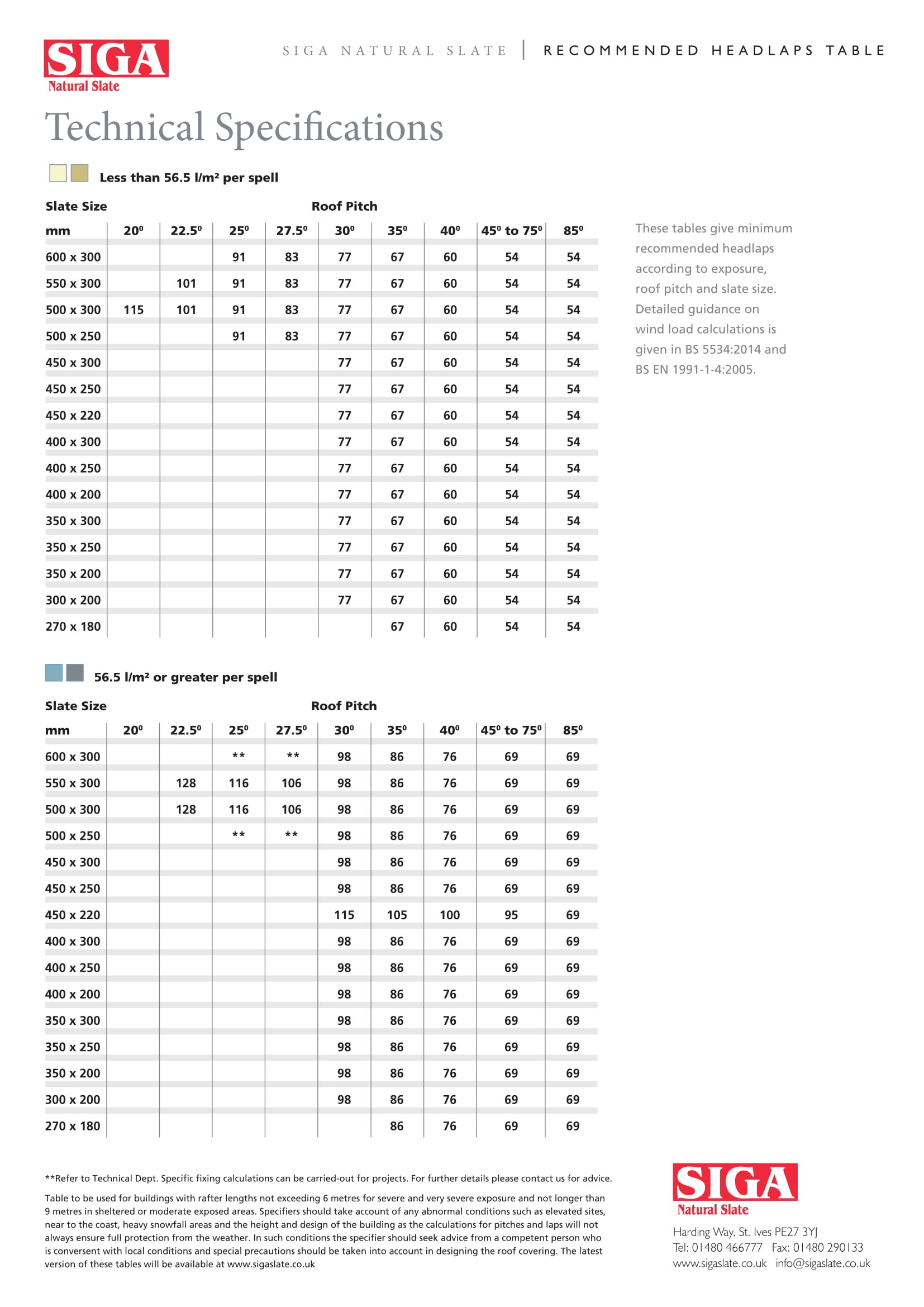Headlaps are crucial for ensuring a watertight slate roof. This article delves into BS 5534:2014, the code of practice for slating and tiling, focusing on headlap requirements for natural slate roofs. We’ll explore how headlaps relate to roof pitch, exposure, and slate size, ensuring your roof withstands even the harshest weather conditions.
 alt text: Chart depicting minimum headlaps for natural slate based on roof pitch and exposure levels as outlined in BS 5534.
alt text: Chart depicting minimum headlaps for natural slate based on roof pitch and exposure levels as outlined in BS 5534.
How Roof Pitch and Exposure Affect Headlap Requirements
The relationship between roof pitch and headlap is fundamental: lower pitches necessitate larger headlaps. This increased overlap combats both capillary action, which can draw water upwards, and wind uplift, preventing slates from dislodging. Steeper pitches facilitate free water runoff, allowing for smaller slates and reduced headlaps. Exposure to the elements also plays a vital role. Exposed locations demand wider slates and greater headlaps for enhanced protection. Sheltered areas offer more flexibility, even permitting roof pitches as low as 20 degrees with a hook fixing system.
Slate Size Considerations for Headlap
Typical slate sizes vary regionally. In Southern England, 500x250mm slates are common, while 400x250mm slates prevail in Scotland and Northern England. Choosing the correct slate size, coupled with the appropriate headlap, will ensure optimal weather resistance and aesthetic appeal. Once these parameters are determined, calculating the required number of slates per square meter becomes straightforward.
Key Takeaways from BS 5534:2014 Regarding Headlaps
BS 5534:2014 provides detailed guidance on minimum headlaps for various scenarios. Crucially, the standard mandates a minimum roof pitch of 20 degrees for natural slates. Specific restrictions apply to slate length at lower pitches, particularly in moderate to severe exposure conditions. For instance, slates 450mm or shorter are unsuitable for pitches of 27.5 degrees or less in such exposures. The standard also addresses rafter length limitations concerning driving rain exposure, generally recommending adherence to headlap tables for rafter lengths up to 9 meters in less severe conditions.
Headlaps and Extreme Weather Conditions
In areas prone to extreme weather, such as coastal regions or locations with heavy snowfall, the standard’s recommendations may not suffice. BS 5534:2014 emphasizes the importance of consulting with a qualified expert familiar with local conditions in these circumstances. This ensures the roof design incorporates necessary precautions to withstand specific challenges. Understanding and implementing the guidelines within BS 5534:2014, particularly concerning headlaps, is essential for constructing a durable and weathertight natural slate roof. By considering factors like pitch, exposure, and slate size, you can ensure your roof meets the rigorous standards set forth in the code of practice.

